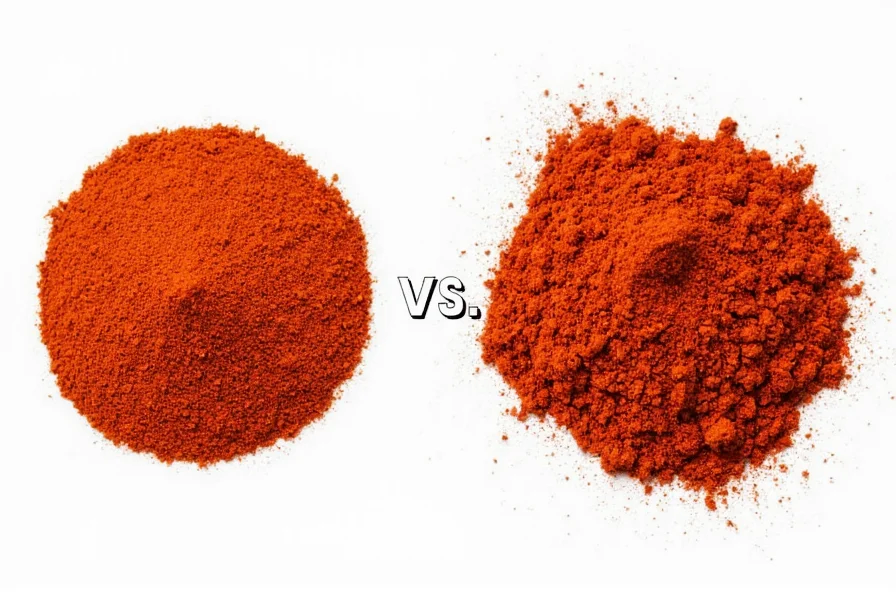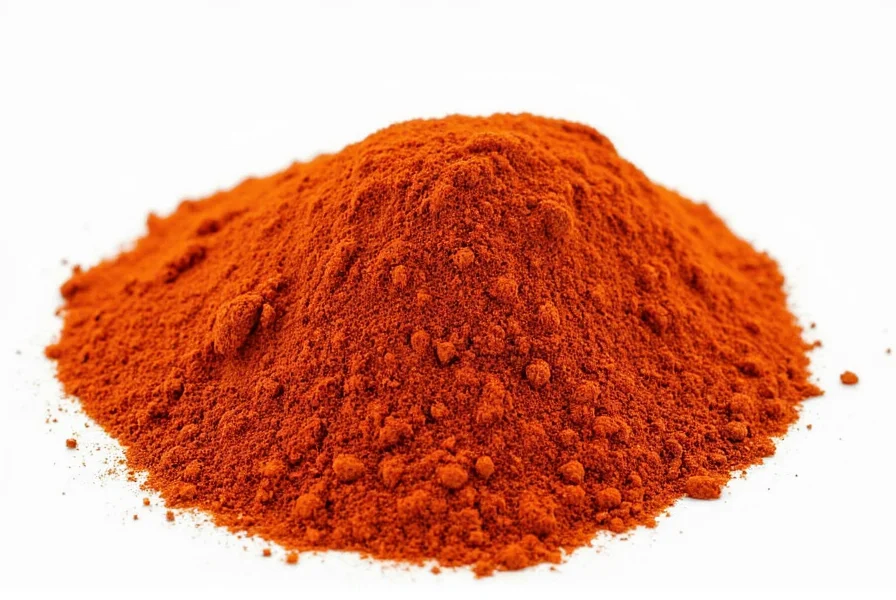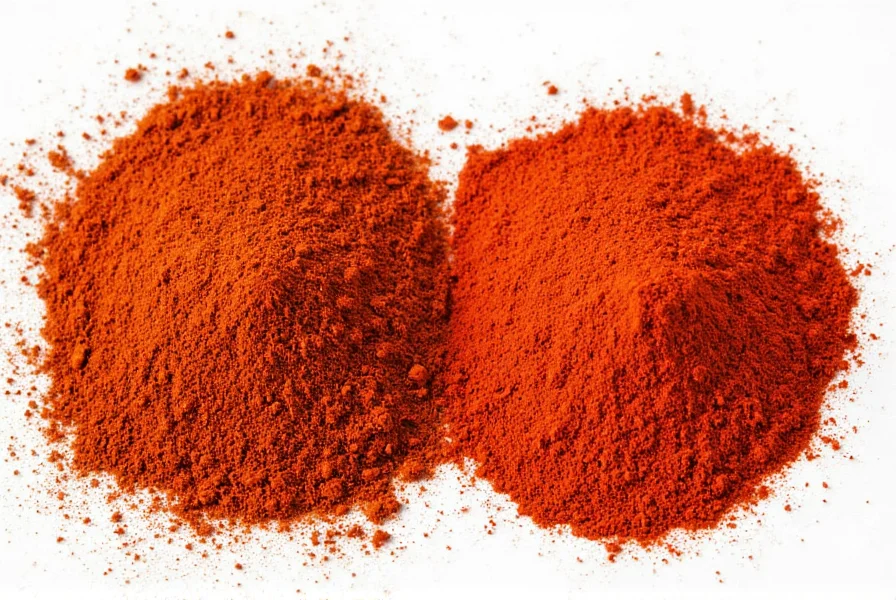When exploring the difference between cayenne pepper and chili powder, many home cooks mistakenly treat these spices as interchangeable. This confusion stems from the fact that cayenne pepper often appears as an ingredient in commercial chili powder blends. However, these two pantry staples have distinct characteristics that significantly impact cooking results.
Defining Each Spice: Composition and Origin
Cayenne pepper comes from specific varieties of Capsicum annuum peppers, typically long, slender red peppers that measure between 30,000-50,000 Scoville Heat Units. When dried and ground, they become the bright red powder known as cayenne pepper. This single-ingredient spice delivers consistent heat and a sharp, clean pepper flavor with subtle fruity notes.
Chili powder, despite its name, rarely contains just chili peppers. Most commercial blends combine ground ancho, cumin, garlic powder, onion powder, and oregano, with cayenne added for heat. The exact composition varies significantly by brand and regional preferences. Texas-style chili powder focuses on pure ground chilies with minimal additives, while Mexican blends might include cocoa or cinnamon, and American supermarket versions often contain substantial amounts of cumin and garlic powder.
| Characteristic | Cayenne Pepper | Chili Powder |
|---|---|---|
| Primary Ingredients | 100% ground cayenne peppers | Blend of chili peppers, cumin, garlic, oregano |
| Heat Level (SHU) | 30,000-50,000 | 500-2,500 (varies by blend) |
| Flavor Profile | Sharp, clean heat with fruity notes | Earthy, smoky, complex with layered spices |
| Color | Bright red | Deep reddish-brown |
| Common Uses | Adding pure heat, hot sauces, rubs | Chili con carne, tacos, enchiladas, stews |
Heat Comparison: Understanding the Scoville Scale
The most significant difference between cayenne pepper and chili powder lies in their heat intensity. Cayenne's 30,000-50,000 SHU places it firmly in the 'hot' category, comparable to Thai bird chilies but milder than habaneros. This concentrated heat makes cayenne ideal when you want pure spiciness without competing flavors.
Most chili powder blends register between 500-2,500 SHU, similar to poblano peppers. The heat varies dramatically depending on the blend—some mild versions contain almost no cayenne, while 'hot' labeled blends increase the cayenne content. This variability means checking ingredient labels is essential when consistent heat matters for your recipe.

Flavor Profiles and Culinary Applications
Cayenne pepper delivers a straightforward, intense heat with minimal flavor complexity beyond its characteristic sharpness and slight fruitiness. Chefs use it when they want heat without altering the fundamental flavor profile of a dish. It works particularly well in:
- Hot sauces where pure pepper flavor is desired
- Rubs for meats where clean heat penetration matters
- Asian stir-fries that require heat without competing spices
- Deviled eggs and potato salads for subtle kick
Chili powder's complex flavor profile makes it a foundational ingredient in Southwestern and Mexican cuisine. The combination of ground chilies with cumin, garlic, and oregano creates a savory, earthy depth that forms the backbone of dishes like:
- Traditional chili con carne
- Taco seasoning and meat fillings
- Enchilada sauces
- Bean dishes and stews
Substitution Guidelines: When and How to Swap
Understanding the difference between cayenne pepper and chili powder is crucial when substituting. You cannot use them interchangeably cup-for-cup due to their dramatic heat difference. If substituting cayenne for chili powder:
- Use 1/4 to 1/2 teaspoon cayenne for every tablespoon of chili powder
- Add complementary spices: 1 tsp cumin + 1/2 tsp garlic powder per tablespoon
- Taste frequently as you adjust heat levels
When substituting chili powder for cayenne:
- Use 2-3 tablespoons chili powder for every 1/4 teaspoon cayenne
- Reduce other spices in the recipe to avoid flavor imbalance
- Expect a more complex, less intense heat profile

Nutritional and Health Considerations
Both spices contain capsaicin, the compound responsible for their heat, which offers potential health benefits including metabolism boost and pain relief. However, cayenne pepper contains higher concentrations of capsaicin due to its purity. A single teaspoon of cayenne provides approximately 1,200-2,000 mg of capsaicinoids, while the same amount of chili powder delivers only 100-500 mg depending on the blend.
Cayenne pepper also contains higher concentrations of vitamin A and C per serving since it's pure pepper without dilution from other ingredients. Both spices offer antioxidant properties, but cayenne's more concentrated form makes it preferable for therapeutic applications where heat intensity matters.
Creating Your Own Custom Blends
For complete control over flavor and heat, consider making your own chili powder. A basic homemade chili powder recipe combines:
- 2 tablespoons ground ancho chili (mild base)
- 1 tablespoon ground cumin
- 2 teaspoons garlic powder
- 1 teaspoon dried oregano
- 1/2 to 1 teaspoon cayenne pepper (adjust for heat)
- 1/4 teaspoon salt
This blend allows you to adjust the cayenne content precisely to your heat preference while maintaining the complex flavor profile of traditional chili powder. For authentic Mexican-style chili powder, omit the cumin and garlic powder and use only pure ground chilies like ancho, guajillo, and pasilla.
Storage and Shelf Life Considerations
Both spices lose potency over time but at different rates. Pure cayenne pepper maintains its heat intensity longer than chili powder blends because it lacks additional ingredients that degrade faster. Store both in airtight containers away from light and heat.
Cayenne typically remains potent for 2-3 years, while chili powder blends last 1-2 years before noticeable flavor degradation. The volatile oils in cumin and garlic powder (common in chili powder blends) dissipate faster than the capsaicin in pure cayenne. To test potency, rub a small amount between your fingers—if the aroma is weak, it's time to replace your spice.
Common Misconceptions Clarified
Several myths persist about these spices. First, "chili powder" doesn't refer to a specific chili variety but rather a spice blend. Second, cayenne pepper isn't always the hottest option—many specialty chili powders contain habanero or ghost pepper. Third, the color difference isn't just visual; cayenne's bright red comes from higher capsaicin concentration, while chili powder's deeper hue reflects its complex ingredient profile.
Frequently Asked Questions
Can I substitute cayenne pepper for chili powder in recipes?
Yes, but with significant adjustments. Use 1/4 to 1/2 teaspoon cayenne for every tablespoon of chili powder, and add complementary spices like cumin and garlic powder to replicate the complex flavor profile. Start with less cayenne and adjust to taste, as the heat difference is substantial.
Which is hotter: cayenne pepper or chili powder?
Cayenne pepper is significantly hotter than most chili powder blends. Pure cayenne measures 30,000-50,000 Scoville Heat Units, while standard chili powder blends range from 500-2,500 SHU. The heat difference means you cannot substitute them cup-for-cup without dramatically altering the dish's spiciness.
What's the main difference between cayenne and chili powder?
Cayenne pepper is a single-ingredient spice made exclusively from ground cayenne peppers, while chili powder is a blend that typically contains cayenne plus other ingredients like cumin, garlic powder, and oregano. This fundamental difference affects heat level, flavor complexity, and culinary applications.
Does chili powder contain cayenne pepper?
Most commercial chili powder blends do contain some cayenne pepper for heat, but the amount varies significantly by brand. Some mild blends contain minimal cayenne, while 'hot' versions increase the cayenne content. Always check the ingredient list if you need specific heat levels or want to avoid cayenne for dietary reasons.
How can I make my own chili powder blend?
Combine 2 tablespoons ground ancho chili, 1 tablespoon cumin, 2 teaspoons garlic powder, 1 teaspoon oregano, 1/2 to 1 teaspoon cayenne (adjust for heat), and 1/4 teaspoon salt. For authentic Mexican style, use only pure ground chilies like ancho, guajillo, and pasilla without additional spices.











 浙公网安备
33010002000092号
浙公网安备
33010002000092号 浙B2-20120091-4
浙B2-20120091-4